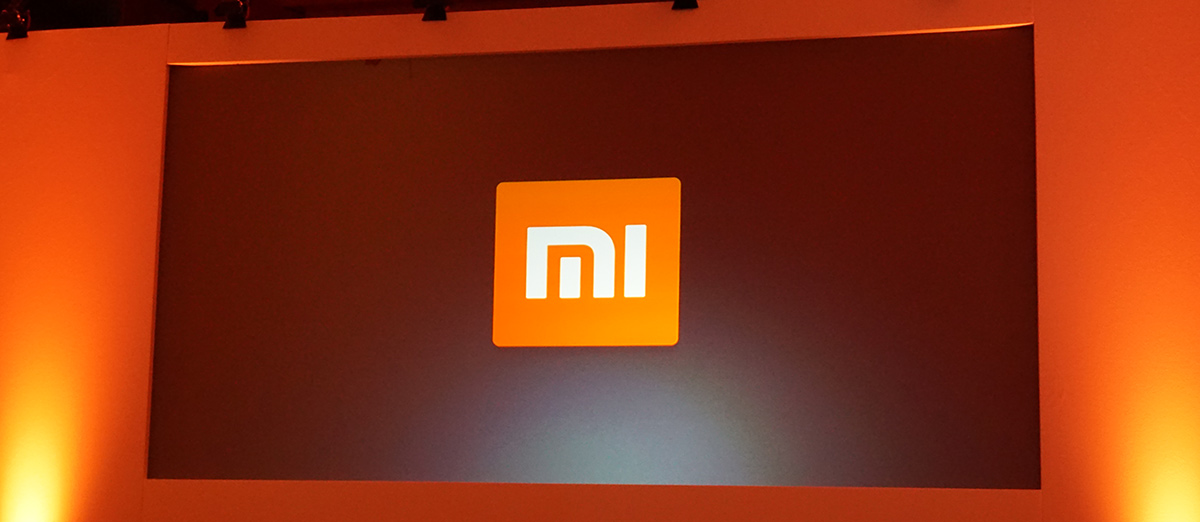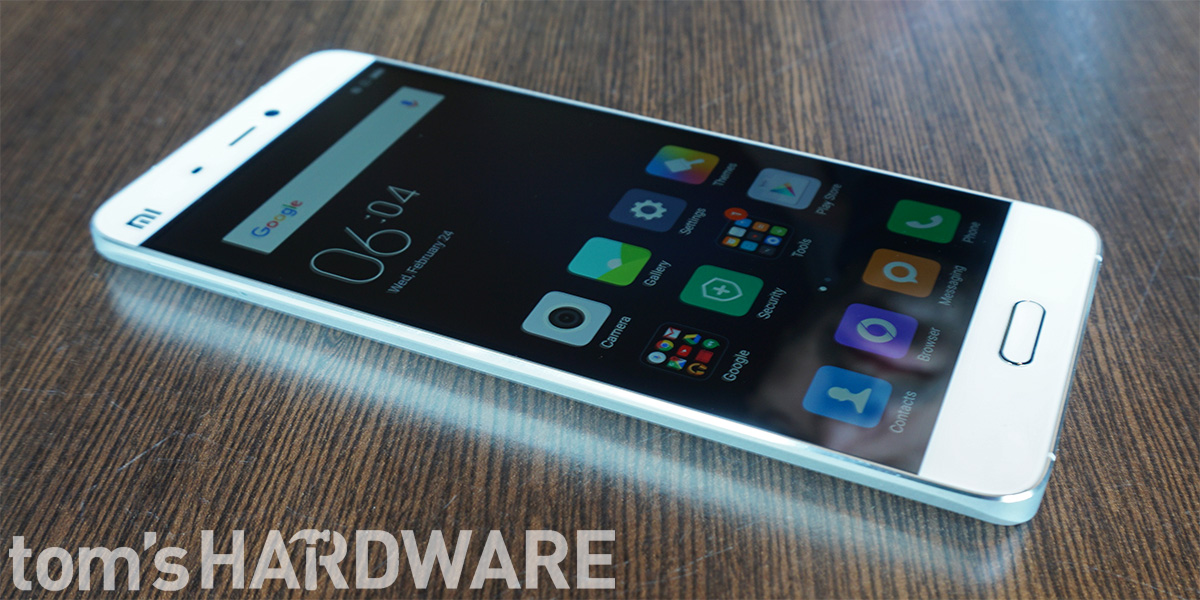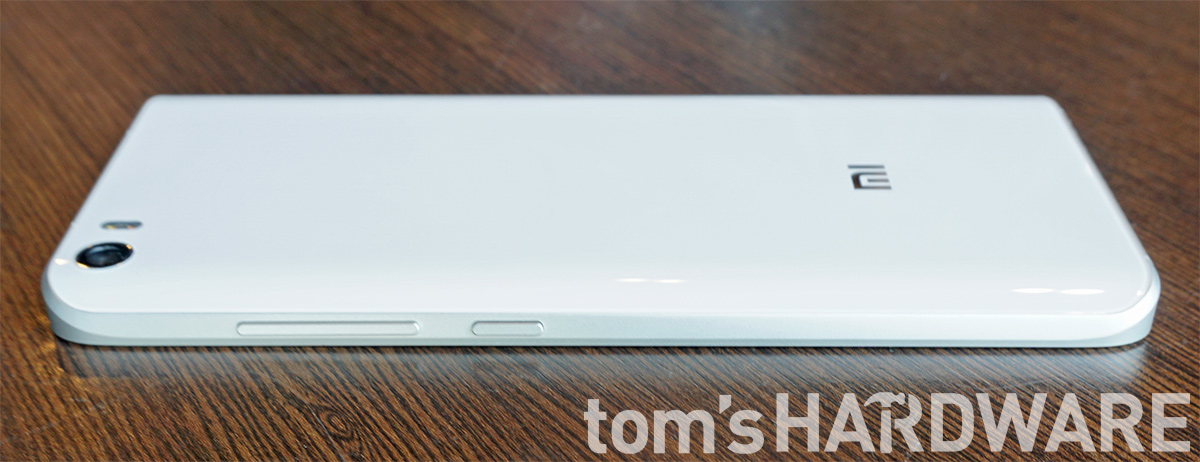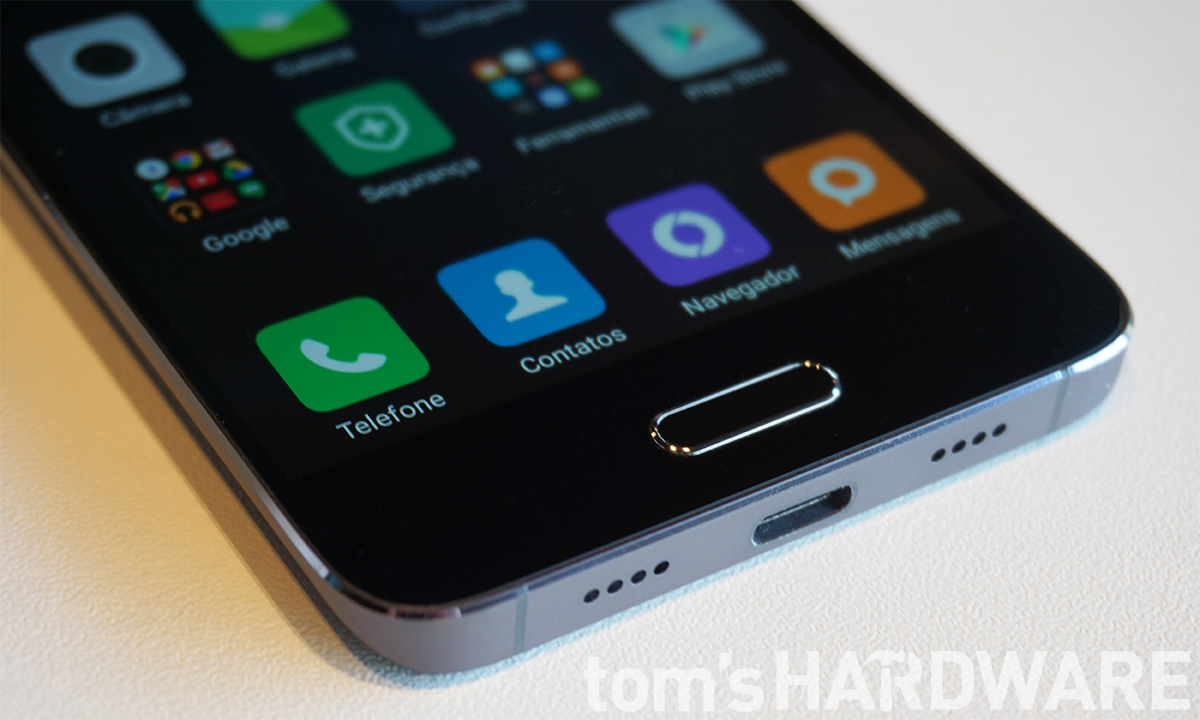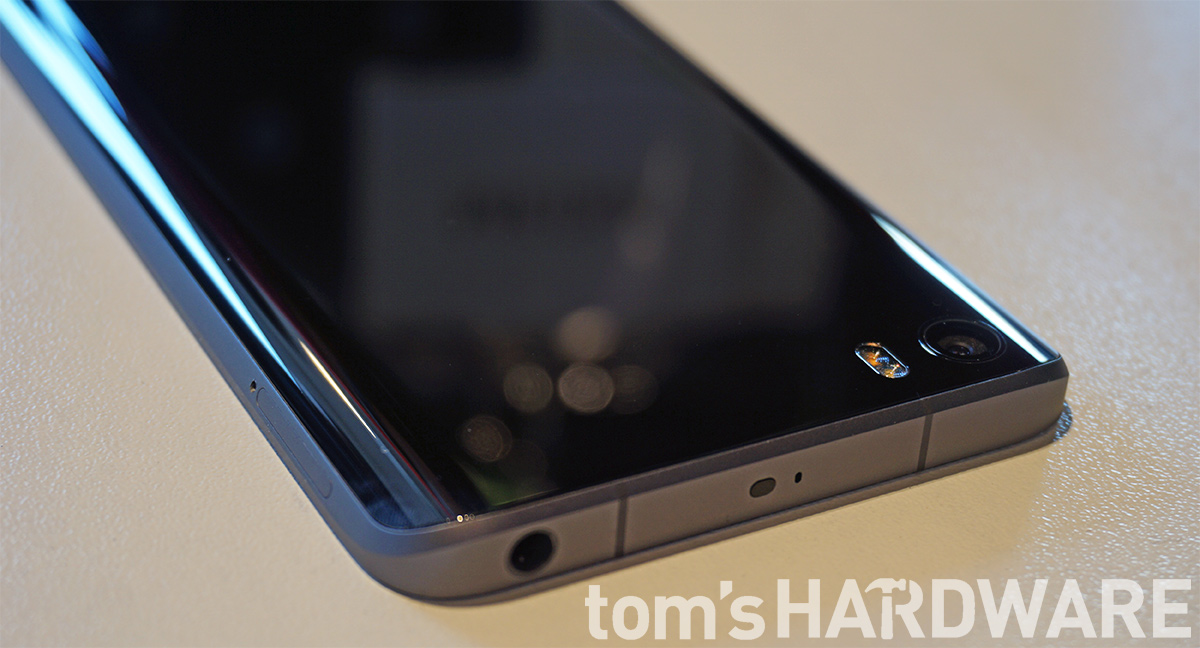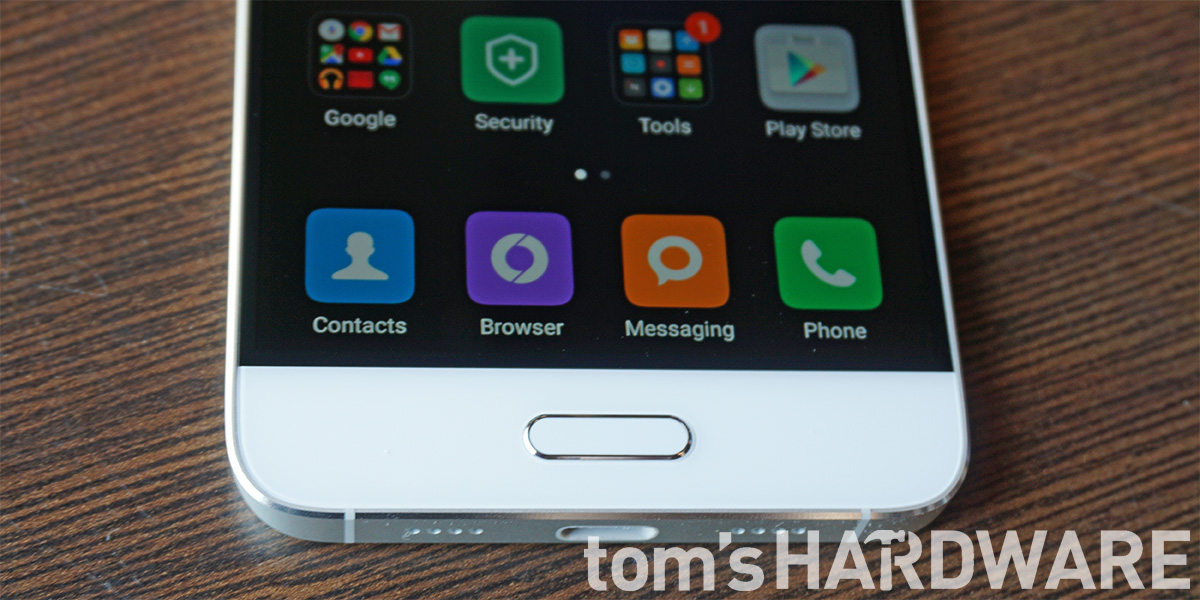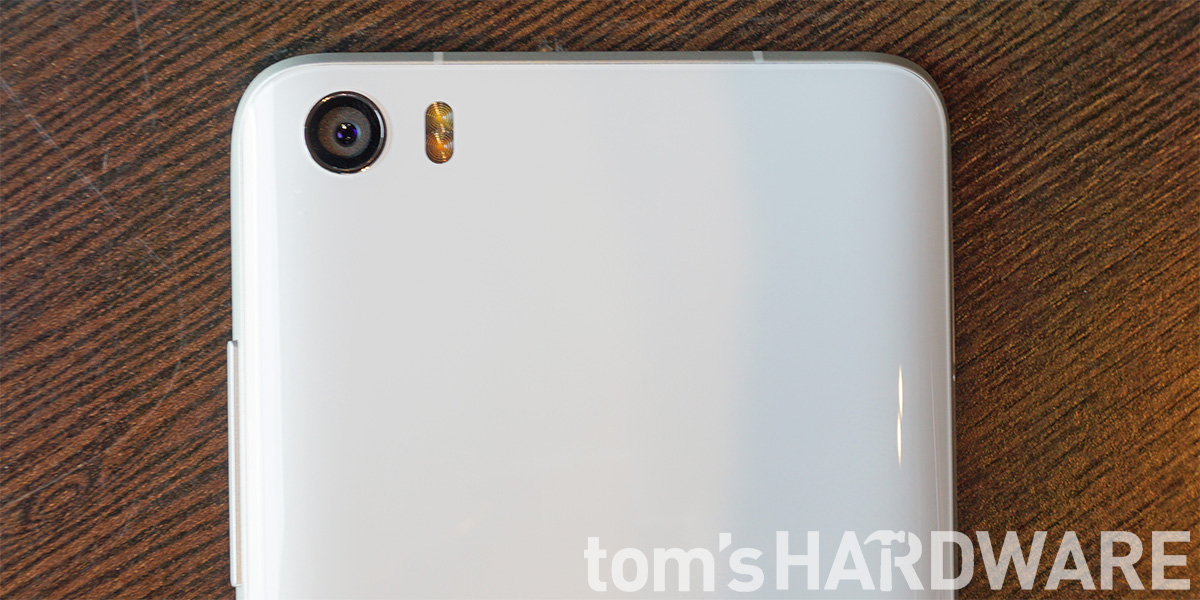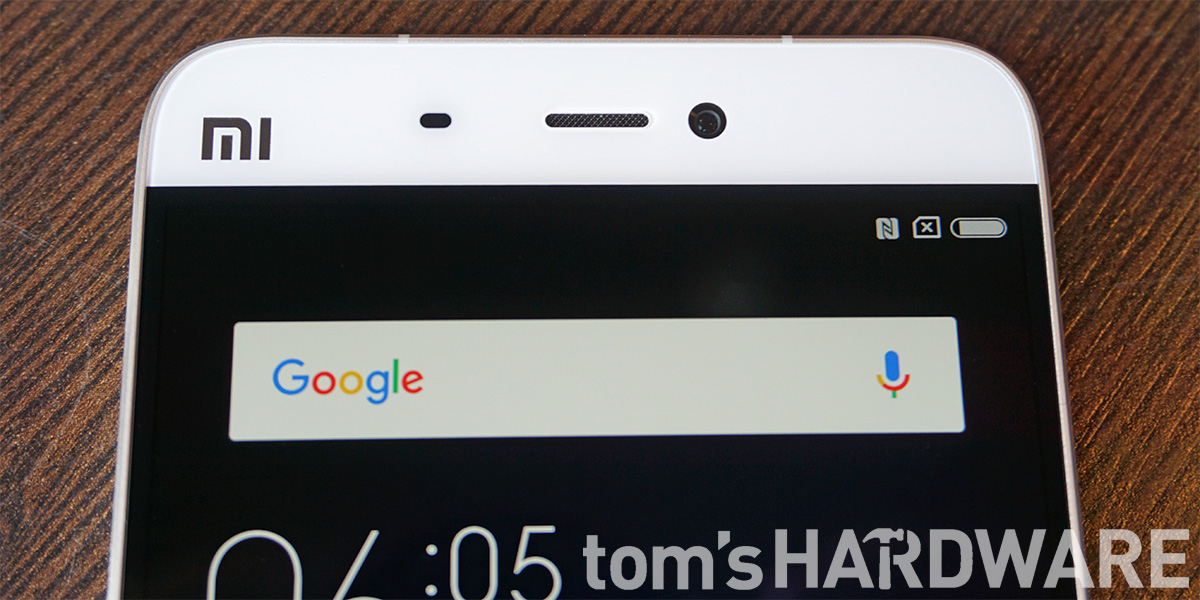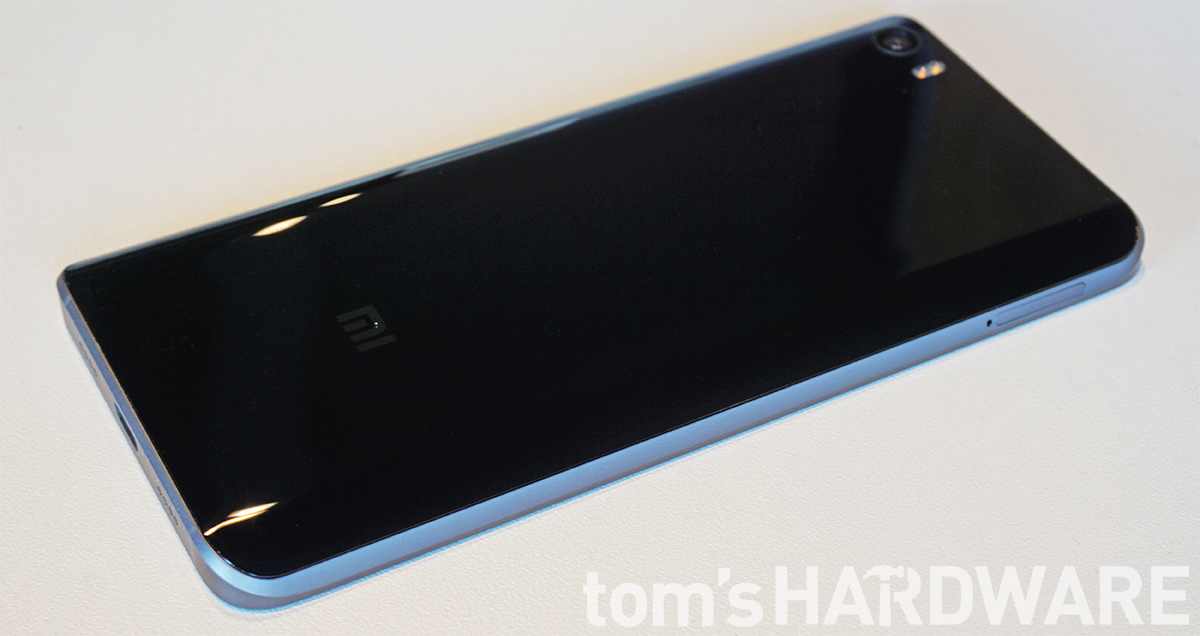Xiaomi Announces Mi 5 Flagship Smartphone
Xiaomi is still a young company, having only been founded in 2010, but it's seen quick success: In 2015 it sold 70 million phones, making it the number one brand in the hotly contested Chinese market by shipments. Hugo Barra, Vice President of International at Xiaomi, seemed genuinely excited as he rolled up to the stage riding the Ninebot mini, a small Segway-like scooter, to announce the Mi 5, the company's latest flagship smartphone and the Mi 4's successor, to a global audience here at MWC 2016. In addition to having some fun teasing the journalists in the audience, repeatedly setting up a big reveal only to pivot to another subject, he emphasized the two key points for the Mi 5: design and speed.
The Mi 5's design draws heavily from the Mi Note, Xiaomi's first phone to use curved glass on the back, and bears a passing resemblance to Samsung's Galaxy S7. The Mi 5, however, uses more gently curved edges than either phone and eliminates the Mi Note's partially flat sides.
The front is edge-to-edge glass covering a 5.15-inch 1080p IPS display. Like other Xiaomi phones, the Mi 5 uses an extended color gamut panel listed at 95 percent NTSC. This means it's capable of displaying exceptionally vivid colors. While some may view this as a positive feature, others will find the inaccurate colors that result from deviating from the sRGB color space, which covers only about 72 percent of NTSC, disappointing.
Xiaomi said the slightly larger than 5-inch screen size was necessary to increase the number of LEDs in the backlight from the 12 to 14 found in most edge-lit IPS displays to 16. This improves power efficiency by 17 percent, presumably from using more LEDs at lower individual output levels, and helps the Mi 5 reach a peak brightness of 600 nits, according to Xiaomi.
The Mi 5 also includes Xiaomi's Sunlight Display feature that utilizes Snapdragon 820's Hexagon 680 DSP to dynamically adjust the contrast for every pixel to improve screen viewability in bright sunlight. Basically, it selectively brightens only the dark areas of the screen without washing out the brighter areas.
Below the screen is a physical home button with integrated fingerprint sensor, a first for a Xiaomi phone. This may seem like a simple design decision, but it was interesting to hear Hugo Barra explain the challenges the company faced. The biggest issue revolved around maintaining an acceptably low screen-to-body ratio. Using a circular button/sensor, like the iPhone does, increases the size of the lower bezel, which forces the upper bezel to grow as well to maintain symmetry. For this reason, the Mi 5 uses an oval sensor like the Galaxy S7, albeit with an even narrower profile.
Reducing the size of the upper bezel has a negative side effect, however: It becomes more difficult to fit the rear camera module above the display panel. If there's not enough room, then it needs to sit behind the display, forcing the camera to stick out from the back of the phone. Xiaomi was able to avoid this problem, allowing the Mi 5's rear camera to sit flush with the back. Besides the camera and dual-color flash in the upper-right corner and the "Mi" branding towards the bottom, the rest of the back is smooth and uncluttered.
Get Tom's Hardware's best news and in-depth reviews, straight to your inbox.
The Mi 5 comes in three different colors: white, gold, and black. The white version has a glossy white back covered in glass, while the gold color has a faint crosshatched pattern sitting below glass. The back of the black version is made from a very hard, wear-resistant ceramic that's 75 percent more expensive than glass, mostly due to the advanced manufacturing processes required to make it.
The curved edges of the back blend smoothly into the aluminum frame. Symmetric speaker grilles flank a USB TypeC port on the bottom, and there's a headphone jack, IrLED, and noise-cancelling microphone on the top. All of the buttons lie on the right edge, with a unified volume rocker near the top and a power button just below.
Technical Specifications
| Header Cell - Column 0 | Mi 5 Pro | Mi 5 |
|---|---|---|
| Display | 5.15-inch IPS @ 1920x1080 (428 PPI) | 5.15-inch IPS @ 1920x1080 (428 PPI) |
| SoC | Qualcomm Snapdragon 820 (MSM8996) | Qualcomm Snapdragon 820 (MSM8996) |
| CPU Core | Qualcomm Kryo (2x @ 2.15GHz + 2x @ 1.59GHz) | Qualcomm Kryo (2x @ 2.15GHz/1.8GHz + 2x @ 1.59GHz) |
| GPU Core | Qualcomm Adreno 530 | Qualcomm Adreno 530 |
| Memory | 4GB LPDDR4 | 3GB LPDDR4 |
| Storage | 128GB | 32GB / 64GB |
| Battery | 3000mAh (non-removable) | 3000mAh (non-removable) |
| Front Camera | 4 MP, 1/3" OmniVision OV4688, 2μm, f/2.0 | 4 MP, 1/3" OmniVision OV4688, 2μm, f/2.0 |
| Rear Camera | 16 MP, 1/2.8" Sony IMX298, 1.12μm, f/2.0, PDAF, OIS, dualcolor LED flash | 16 MP, 1/2.8" Sony IMX298, 1.12μm, f/2.0, PDAF, OIS, dualcolor LED flash |
| Special Features | fingerprint scanner, 4-axis OIS, Dual SIM Dual Standby, Qualcomm Quick Charge 3.0 | fingerprint scanner, 4-axis OIS, Dual SIM Dual Standby, Qualcomm Quick Charge 3.0 |
| OS | Android 6.0 (MIUI 7) | Android 6.0 (MIUI 7) |
| Materials | Aluminum, Ceramic | Aluminum, Glass |
| Size | 144.6 x 69.2 x 7.3 mm, 139g? | 144.6 x 69.2 x 7.3 mm, 129g |
The Mi 5 comes in three slightly different hardware configurations. The Mi 5 Pro includes 4GB of LPDDR4-1866 RAM and 128GB of internal storage. It only comes in black and uses the ceramic back. Dropping down a level reduces the amount of RAM and storage to 3GB and 64GB, respectively. The base Mi 5 also comes with 3GB of RAM but only 32GB of storage. It also uses the lower binned version of the Snapdragon 820 that drops the peak frequency on the performance cores from 2.15GHz to 1.8GHz. Both of the standard Mi 5 models come in both white or gold and use glass backs.
In our first look at Snapdragon 820, we found it offered good system and peak gaming performance, although we still need to evaluate its heat generation and power efficiency. This is the first time we've seen the lower-binned 820 employed, but the average user is unlikely to notice the small reduction in CPU frequency.
There's no microSD card support, but Xiaomi at least offers up to 128GB of internal storage, using the faster, bi-directional UFS 2.0 NAND.
It comes with the usual compliment of wireless connection options, including 802.11a/b/g/n/ac WiFi, Bluetooth 4.2 LE, NFC, and Qualcomm's newest X12 LTE modem, integrated into Snapdragon 820, capable of Category 12 download speeds of up to 600Mbps and Category 13 upload speeds of up to 150Mbps. The Mi 5 even supports Dual SIM Dual Standby, a handy feature for anyone who travels outside their home country or needs to separate work and home numbers.
Xiaomi managed to squeeze a 3,000mAh battery into the Mi 5's thin chassis, the same capacity as the Galaxy S7 but more than Google's Nexus 5X or HTC's One A9. There's no wireless charging, but it does include Qualcomm's Quick Charge 3.0 rapid charging technology.
Xiaomi spent quite a lot of time at the announcement espousing the virtues of the Mi 5’s camera, and on paper its setup looks quite impressive. The rear camera uses the new Sony IMX298 Exmor RS sensor, the same one found in the Huawei Mate 8, which is a big step up from the Sony IMX214 found in the Mi 4. This sensor features DTI (deep trench isolation) to prevent light leakage between the sensor’s photodiodes. This improves color fidelity and is also featured in the iPhone 6s phones.
The 16MP IMX298 sensor measures 1/2.8-inches and has 1.12μm pixels. Although smaller than the Galaxy S7’s pixels, the 6-element lens with f/2.0 aperture should still let in a decent amount of light. The Mi 5 also makes use of Snapdragon 820’s dual Spectra image signal processors (ISPs) for low-light enhancement, night scene stabilization, and color enhancement.
The Mi 5’s camera has phase detect autofocus (PDAF) to improve focus speed. It also is one of the first smartphones to include 4-axis optical image stabilization (OIS), which dampens rotation about two axes as well as translation within the camera sensor plane. This is a step up from the 2- and 3-axis OIS found on other leading smartphones, producing noticeably better results than the 2-axis stabilization in the iPhone 6s shown in a video demonstration. Xiaomi has not lavished as much attention on the front-facing camera, though; it has the same 4MP sensor with 2μm pixels as the Mi Note.
On the software front, it's no surprise that the Mi 5 runs Xiaomi's own flavor of Android, MIUI. Like so many other Chinese remixes of Google's OS, MIUI has a decidedly iOS feel, with no application drawer and bright, colorful Apple-esque icons. The Mi 5's version of MIUI is the Marshmallow-based version 7, and Xiaomi made note that its software team is larger than its hardware team.
Much of this development is for apps and services for the Chinese market because users do not have access to Google's applications and services on their devices. If the Mi 5 does find its way outside of its home market, we do hope that Xiaomi tasks some of its software team to suitably modify the Mi 5's OS to be more palatable to western users.
Final Thoughts
The Mi 5 is a nice looking, well-made phone. Its internal hardware is as good as we'll see from any flagship Android phone this year, so performance should not be an issue. The 3000mAh battery is a bit better than average for a 5-inch class device, and if Xiaomi's improved backlight efficiency claims are accurate, then the Mi 5 should be able to last a full day on a charge without too much trouble. The only obvious issues are the lack of a microSD slot and the extended gamut display, both of which are a matter of personal taste.
For now, the Mi 5 will only be available in China on mi.com and at Mi Home stores, starting March 1, 2016. The 32GB model is RMB 1999 (~$254 USD), the 64GB model is RMB 2299 (~$262 USD), and the 128GB Mi 5 Pro is RMB 2699 (~$354 USD). The USD prices above (that were announced by Barra) are calculated from the Chinese prices less the sales tax that is included in the number. However, if you were to buy one in China next week you’d be paying the tax, so your final cost in USD would be around $305, $350 or $415 depending on the model.
Keep in mind that while these may sound like amazing prices (even with our exchange rate correction) for a phone of this build quality and with these specs, when the Mi 5 makes it to other markets it will certainly be more expensive. Xiaomi did say that it would be coming to other global markets soon, but did not specify where. Let's hope that for this phone, the U.S. and Canada are included!
Update, 2/25/2016, 8:55 a.m. PST: USD pricing has been clarified.
Matt Humrick is the Mobile Editor at Tom's Hardware. Contact him at mhumrick@tomshardware.com and follow him on Twitter @digitalOut_net. Follow us @tomshardware, on Facebook and on Google+.
-
RonaldoRoss The mobile is sleek in its design and very good in it's feature. A good alternativ against branded mobiles.Reply -
sylentz199 ReplyIs it just me, or are those VERY rough conversions from RMB to USD?
Uh yeah I'm getting RMB 2699 == $412USD... -
alex davies ReplyIs it just me, or are those VERY rough conversions from RMB to USD?
Uh yeah I'm getting RMB 2699 == $412USD...
Yes, we explain that in the article. The USD prices given by Xiaomi at its announcement were based on the cost in RMB less the 17% sales tax that is included in that figure. Below those numbers we do provide the approximate USD prices of the Mi5 if you were to buy one at the advertised RMB price. -
ferooxidan what is the display made of? just glass? no specific something like dragonfly or gorilla?Reply -
poochiepiano Reply
I see. I asked because I was originally just curious what the tax rate was in China and I was getting numbers from 17% to 33% which i thought was really weird.Is it just me, or are those VERY rough conversions from RMB to USD?
Uh yeah I'm getting RMB 2699 == $412USD...
Yes, we explain that in the article. The USD prices given by Xiaomi at its announcement were based on the cost in RMB less the 17% sales tax that is included in that figure. Below those numbers we do provide the approximate USD prices of the Mi5 if you were to buy one at the advertised RMB price. -
Shan_GolfR ReplyI should say, looks like a Galaxy Edge.. :)
Galaxy copied Mi Note back design. Google release dates. -
bin1127 ReplyIs it just me, or are those VERY rough conversions from RMB to USD?
2299/262 = 8.77. lol ya it's messed up. usd/cny is 6.54.
-
MrKingD I'm using MI note LTE now and I'm planning to buy MI 5, however, all Xiaomi phone's 4G bands are limited to Chinese companies like band 1,3,7,38,39. And in US it's band 2 and 4, Britain 20. That means you can't use 4G network in some other countries. Some developers in XDA have successfully unlock bands with a Qualcomm's chip flash tool.Reply
